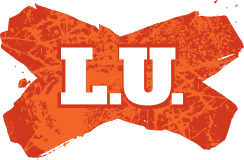the parliament had to change the law in 2019 for cocaine test, how it operates now, police can test for cocaine now, but they don't, cause 1,000s would be caught every day
In 2018, drug-drivers are on notice. That’s the message from the NSW government as it toughens up measures against drug-taking motorists in a bid to curb the state’s horror road toll.
The crackdown, announced this month, means there’ll be a dramatic increase in mobile-drug-tests across NSW this year. Authorities have promised to double the number of roadside MDTs annually, to 200,000.
But that’s not all. For the first time, NSW police plan to swab drivers for cocaine after the government pledged to add the drug to its mobile testing regime.
That’s a big change from the state’s current MDT setup that only picks up ecstasy, cannabis and speed on roadside saliva swabs.
The addition of cocaine to roadside testing is part of a push by authorities to reduce NSW road deaths, which in 2017 soared to an eight-year-high of 392.
While NSW is leading the charge in boosting its anti-drug driving laws, there are also signs Victoria’s drug-driving regime could also be set for a beef-up.
Just this week, The Police Association of Victoria’s
Bruce McKenzie said testing for cocaine in roadside drug tests had “seemed to have been overlooked somehow”, with authorities in the state keen to look at the results from NSW once cocaine testing starts north of the border.
While the situation in Victoria is still developing, here’s what we know so far about the plans for roadside cocaine testing in NSW.
When will testing for cocaine commence in NSW?
The NSW government needs to change the Road Transport Act 2013 to enable roadside drug testing for cocaine. It is planning to progress this in parliament in the first half of 2018.
How will cocaine testing work?
According to the NSW government, cocaine will be tested for alongside the three drugs — cannabis, speed and ecstasy — that MDTs currently detect.
The same swab test that police already carry out will now detect all four drugs, meaning that there’ll be no extra testing steps to detect cocaine at MDTs.
Currently, if you’re stopped by police for drug and alcohol tests you’re asked for your licence, and then complete a breath test for alcohol. You can then be asked to wipe the screening test on your tongue and return it to police.
If your test is positive, you’re taken to a roadside testing van or bus, or back to a police station to provide a saliva sample, which is sent to a laboratory for confirmation.
Where will cocaine testing operate?
Because MDT is a state-wide program, testing for cocaine, once it commences, will be conducted across NSW at any time of day and in all regions.
How much cocaine do you need to take to be caught by a MDT saliva test?
The NSW government wouldn’t tell us that bit, so we asked Safe Work Laboratories national chief toxicologist, Phil Tynan.
Dr Tynan, who helps companies across Australia run drug tests in their workplaces, says that saliva tests, like those used in MDTs, are quite sensitive and usually detect cocaine at a “standard dose” of 50-150 milligrams. He says that’s roughly equivalent to about one snort of the drug.
How soon after taking cocaine will it show up in tests?
Dr Tynan says that cocaine’s likely to be picked up in an MDT within five minutes of use.
How long does cocaine take cocaine to get out of your body?
A high dose of cocaine, equivalent to over 150mgs, is likely to be detectable up to about 17 hours to 24 hours in a saliva test, Dr Tynan says. He says a low dose, equivalent to under 100mgs, will be detectable for around 14 hours
Does this vary depending on factors like age, weight and sex?
According to Dr Tynan, body mass is more important than sex when it comes to impacting how long cocaine takes to leave the body. That’s because the smaller a person is, the higher the dose per kilogram of body mass they will ingest of the drug.
Another big factor that prolongs the cocaine “detection window” is whether you’re a frequent cocaine user. Dr Tynan says cocaine tends to “accumulate in the body”, meaning that chronic use can result in a “prolonged terminal elimination phase”. In other words, if you’re a regular cocaine user, it can take longer to get all of it out of your system.
How long after you take cocaine is it safe to drive?
Dr Tynan says it’s unlikely that roadside tests will detect cocaine 24 hours after use.
What are other politicians saying about it?
Greens NSW MP David Shoebridge also backs adding cocaine to roadside testing.
However, he says the state’s MDT regime “remains deeply flawed” because it punishes drivers for having any level of drug in their system and not for whether their driving’s impaired.
He also thinks prescription drugs, such as benzodiazepines, should be added to the list because like illegal drugs they can impair your driving ability when taken at certain quantities.
“In its present form, the roadside testing program is an expansion of the failed war on drugs,” Mr Shoebridge told Hack.
“Just like with testing for alcohol, if a driver has a level of any drug in their system that impairs their ability to drive safely, that’s what we should be checking for.
“Right now people are losing their licence because they smoked a joint three days before they were stopped at an RDT while other drivers, zonked to their eyeballs on benzodiazepines … are just waved through.”
How dangerous is drug driving?
According to the NSW Centre for Road Safety, cocaine was linked to 13 road fatalities between 2012 and 2016, compared with 308 associated with ecstasy, cannabis, and ice.
By contrast, drink driving is a factor in about one in every five fatal crashes in NSW.
https://www.abc.net.au/triplej/programs/hack/roadside-cocaine-testing/9357280



